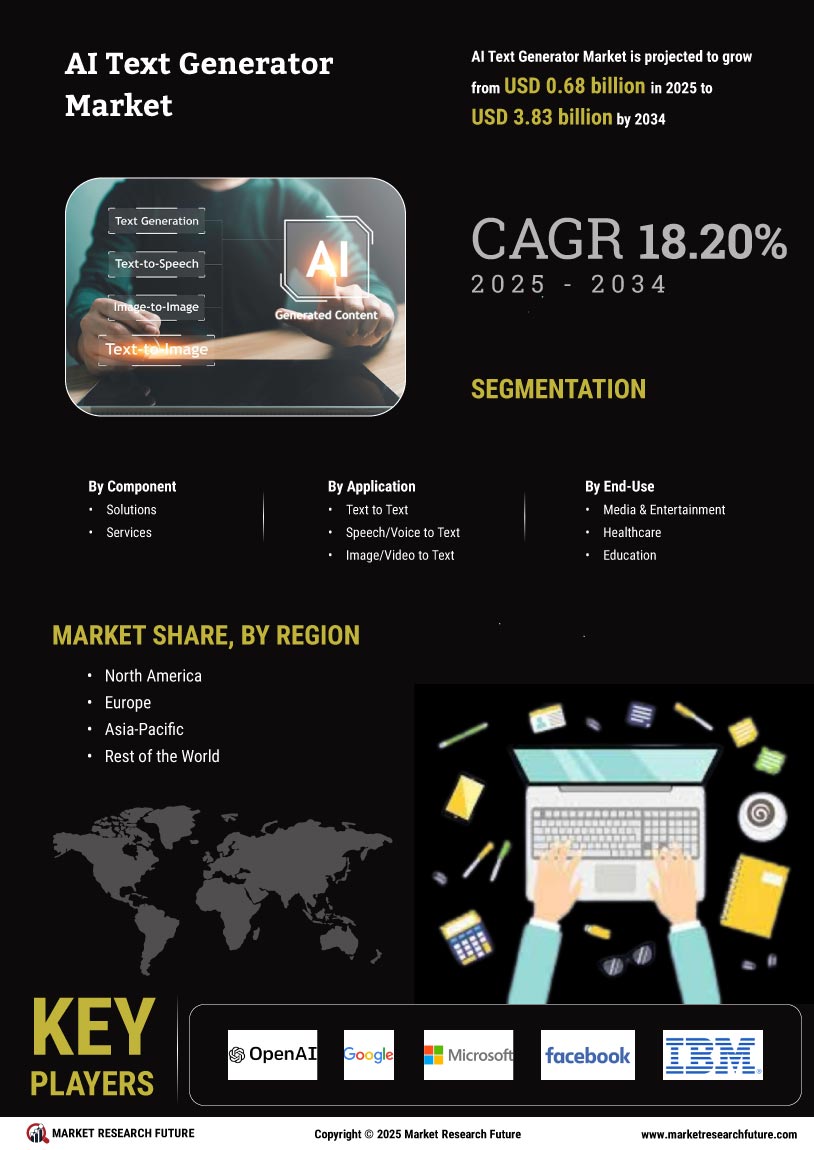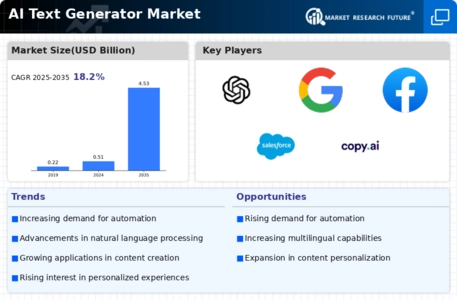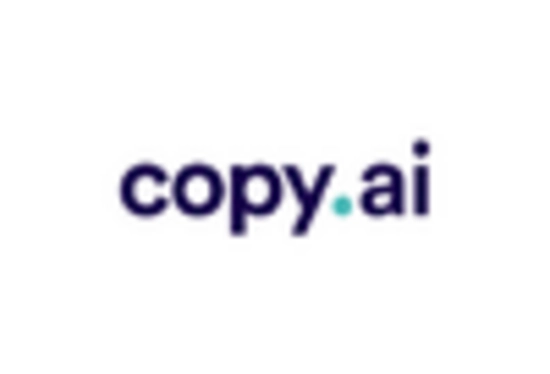The AI Text Generator Market is currently characterized by intense competition and rapid innovation, driven by advancements in natural language processing and machine learning technologies. Key players such as OpenAI (US), Google (US), and Microsoft (US) are at the forefront, each adopting distinct strategies to enhance their market positioning. OpenAI (US) focuses on continuous innovation, particularly through the development of its GPT models, which have set industry standards for text generation. Google (US), leveraging its vast data resources, emphasizes integration with its existing services, thereby enhancing user experience and accessibility. Meanwhile, Microsoft (US) has strategically partnered with OpenAI to incorporate advanced AI capabilities into its product suite, indicating a collaborative approach to market expansion. Collectively, these strategies contribute to a dynamic competitive environment, where innovation and strategic partnerships are paramount.
In terms of business tactics, companies are increasingly localizing their operations and optimizing supply chains to enhance efficiency and responsiveness to market demands. The AI Text Generator Market appears moderately fragmented, with a mix of established players and emerging startups. This structure allows for diverse offerings and competitive pricing, although the influence of major players like OpenAI (US) and Google (US) remains substantial, shaping market trends and consumer expectations.
In September 2025, OpenAI (US) announced the launch of its latest model, GPT-5, which reportedly offers enhanced contextual understanding and user customization features. This development is significant as it not only reinforces OpenAI's leadership in the market but also sets a new benchmark for competitors, compelling them to accelerate their innovation cycles. The introduction of GPT-5 is likely to attract a broader user base, further entrenching OpenAI's position in the industry.
In August 2025, Google (US) unveiled a new suite of AI-driven writing tools integrated into its Workspace platform. This strategic move aims to enhance productivity for businesses and individuals alike, suggesting a shift towards more user-centric applications of AI technology. By embedding these tools within its widely used services, Google (US) is likely to capture a significant share of the market, leveraging its existing customer base to drive adoption.
In July 2025, Microsoft (US) expanded its partnership with OpenAI (US) to include joint research initiatives focused on ethical AI development. This collaboration underscores Microsoft's commitment to responsible AI practices while simultaneously enhancing its technological capabilities. Such strategic alliances not only bolster Microsoft's offerings but also reflect a growing trend towards collaborative innovation in the AI sector.
As of October 2025, the competitive landscape is increasingly defined by trends such as digitalization, sustainability, and the integration of AI across various sectors. Strategic alliances are becoming more prevalent, as companies recognize the value of collaboration in driving innovation and market reach. Looking ahead, competitive differentiation is likely to evolve, with a pronounced shift from price-based competition to a focus on technological innovation, reliability in supply chains, and the ability to deliver tailored solutions to diverse customer needs.

















Leave a Comment